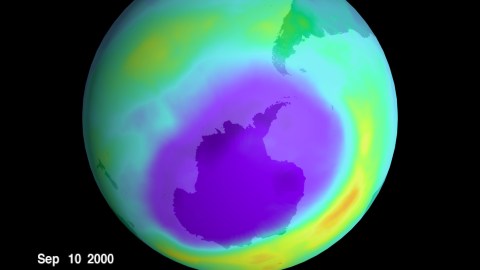Ozone Hole Could Be Completely Healed by 2050

The Earth’s atmosphere is on the mend, according to an article published in Science. It took almost 30 years for the ban on ozone-depleting substances, like chlorofluorocarbons (CFCs), to work and scientists are saying if this trend continues, the ozone could be completely healed by the middle of the century. It’s a wonder what environmental policies can do for our health.
The Montreal Protocol was an international treaty signed by countries around the world in 1987 and put into action by 1989. Its signers agreed to stop the use of CFCs, lest we wanted to open the ozone further. Had use of CFC continued, NASA scientists say the ozone hole would have covered the globe by 2054. In a time without the Earth’s natural sunscreen, people with unprotected skin could experience a sunburn in under 10 minutes on a sunny day. It’s likely rates of skin cancer would also increase.
“This is just the beginning of what is a long process,” atmospheric chemist Susan Solomon, the lead author of the study, told to The New York Times. “[A]s molecules slowly decay away from the atmosphere, it’s getting just a little bit better.”
It’s estimated the hole in the ozone layer has shrunk by about 1.5 million square miles from 2000 (when the hole was at its peak) to 2015. However, the ozone is a complex system, and its health is reliant on factors beyond human influence, like volcanic activity and the weather. In the summer over Antarctica, the ozone experiences a natural depletion and recuperates during the winter.
“We can now be confident that the things we’ve done have put the planet on a path to heal,” Solomon told Popular Science. “Which is pretty good for us, isn’t it? Aren’t we amazing humans, that we did something that created a situation that we decided collectively, as a world, ‘Let’s get rid of these molecules’? We got rid of them, and now we’re seeing the planet respond.”
***
Photo Credit: Getty Images / Staff





